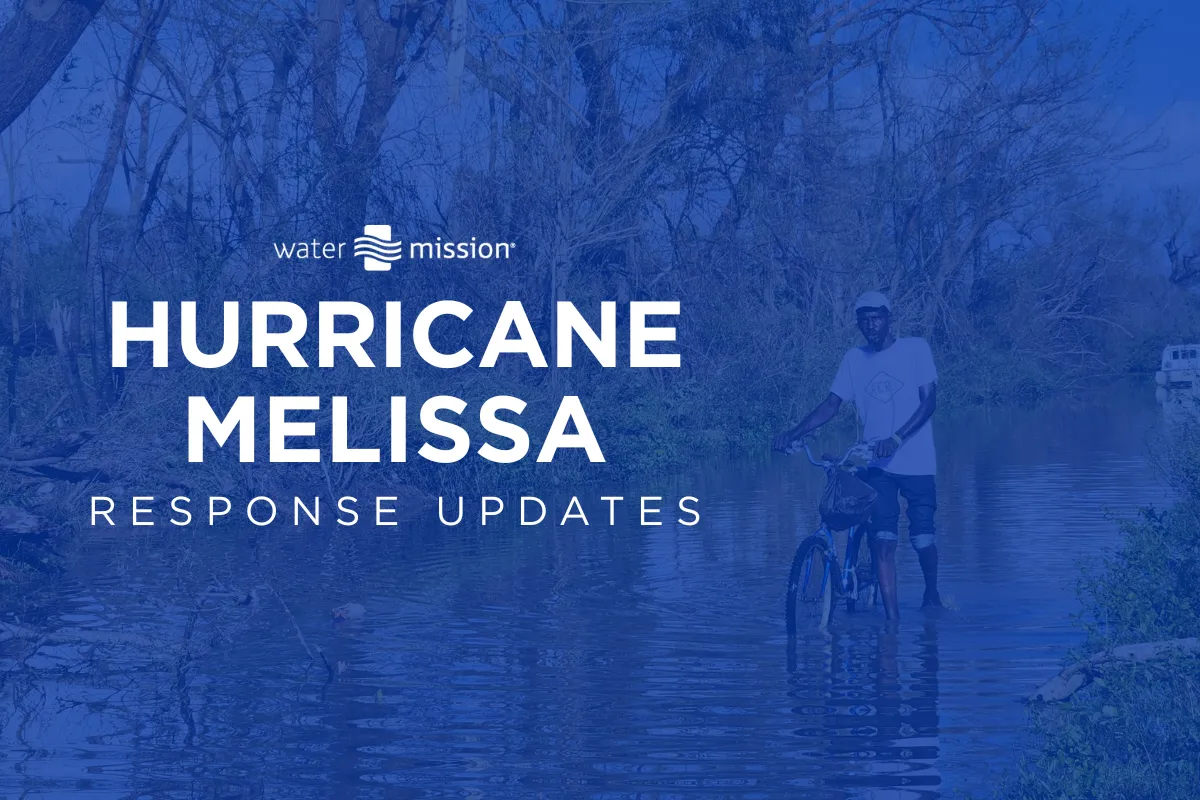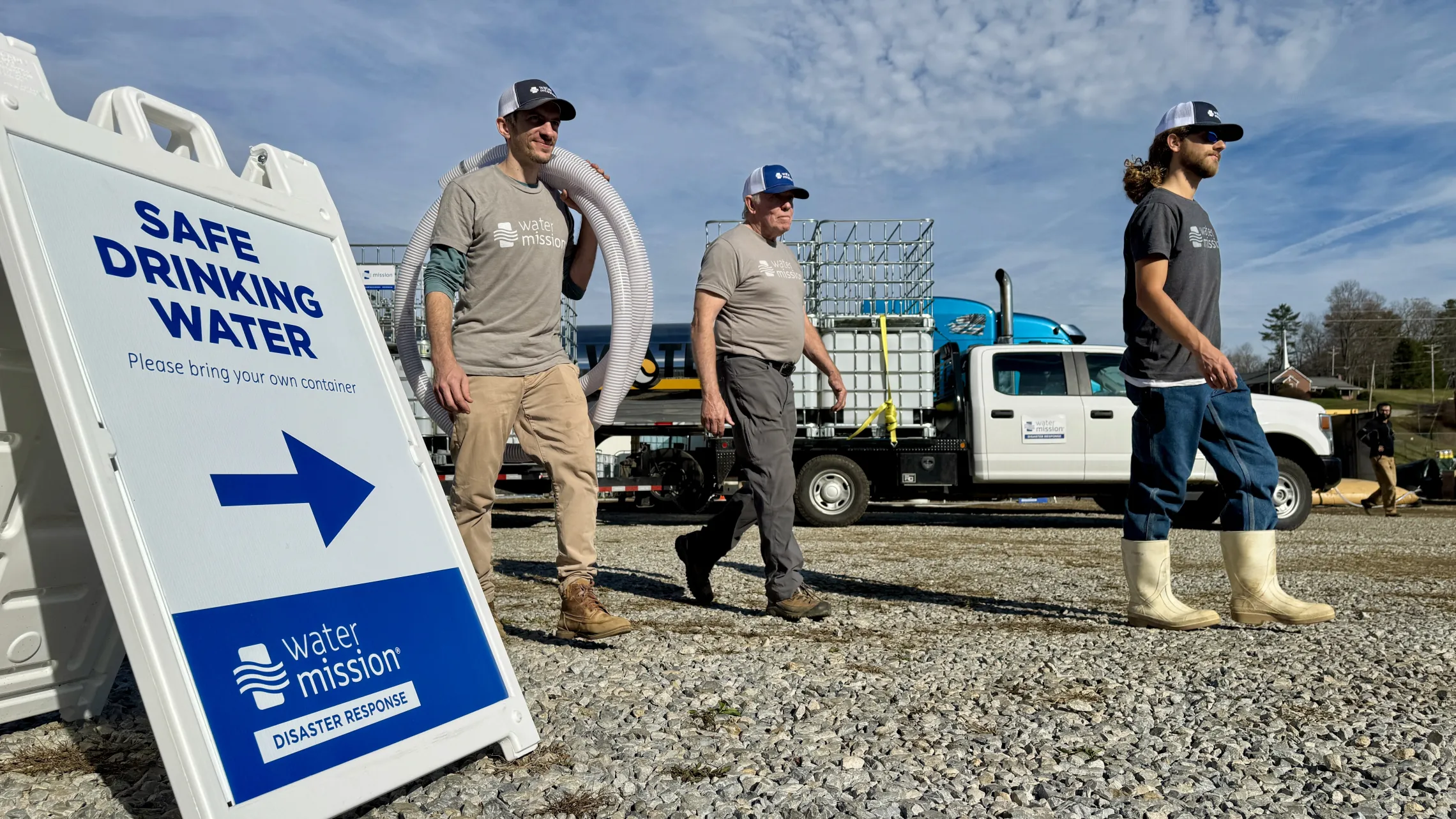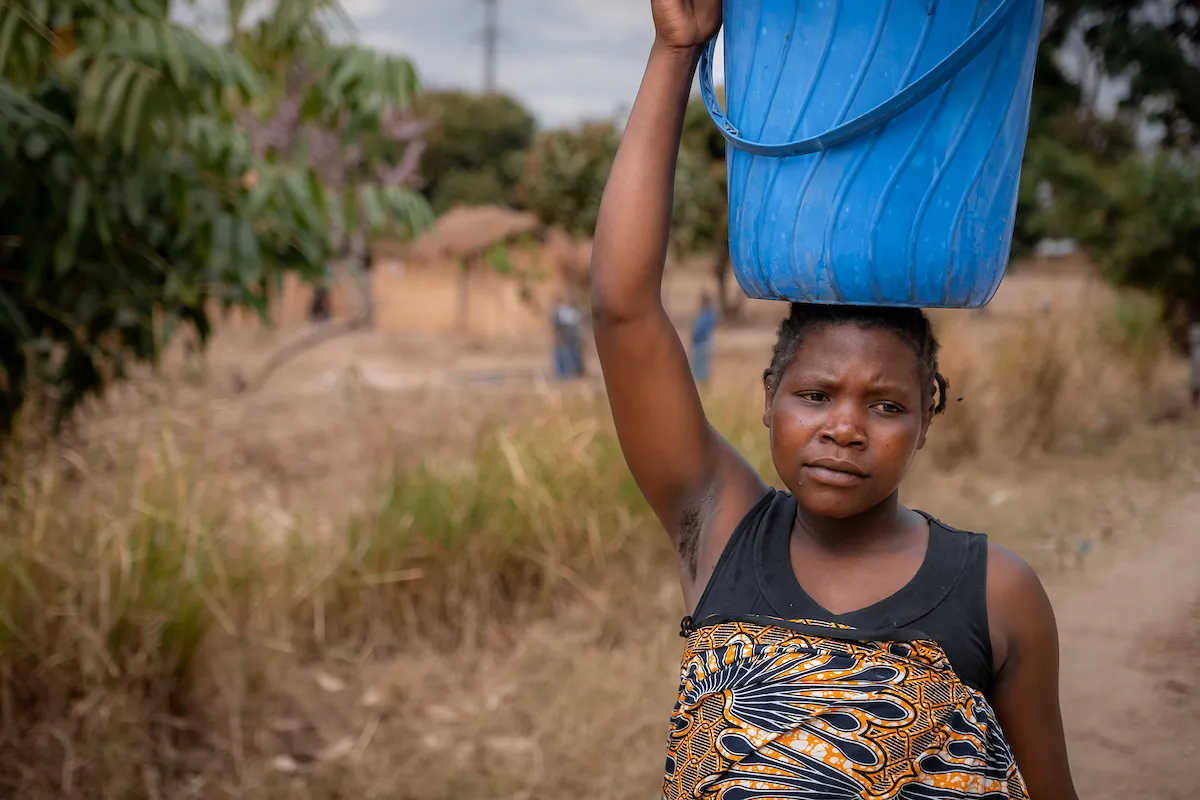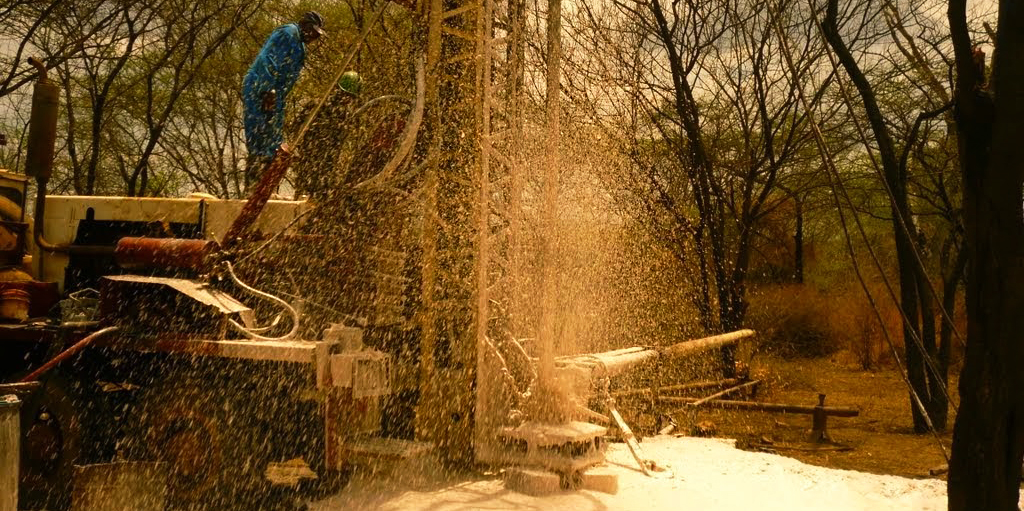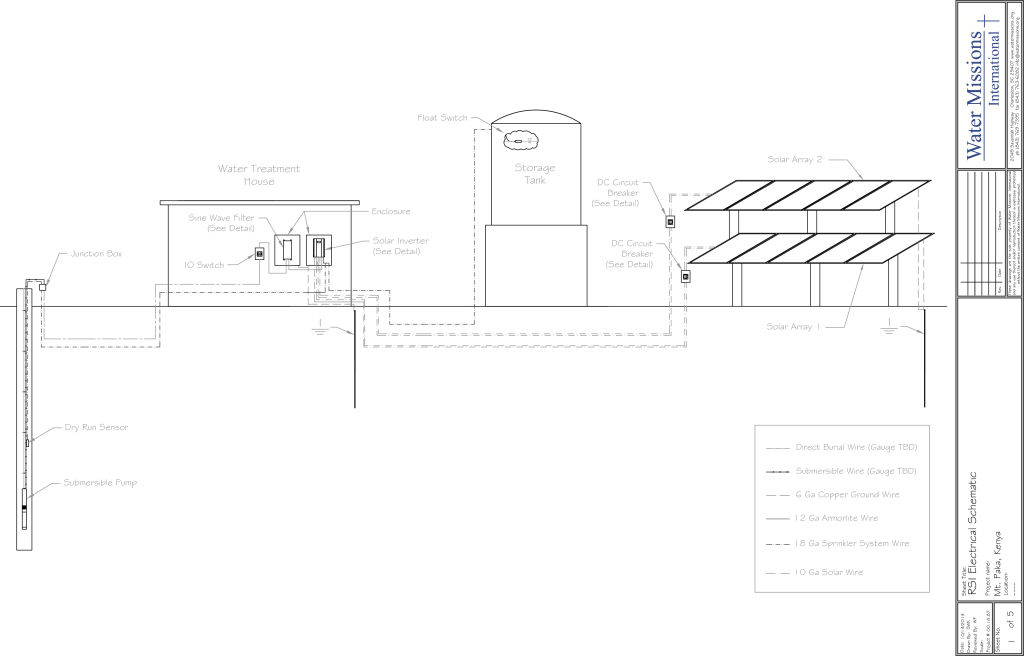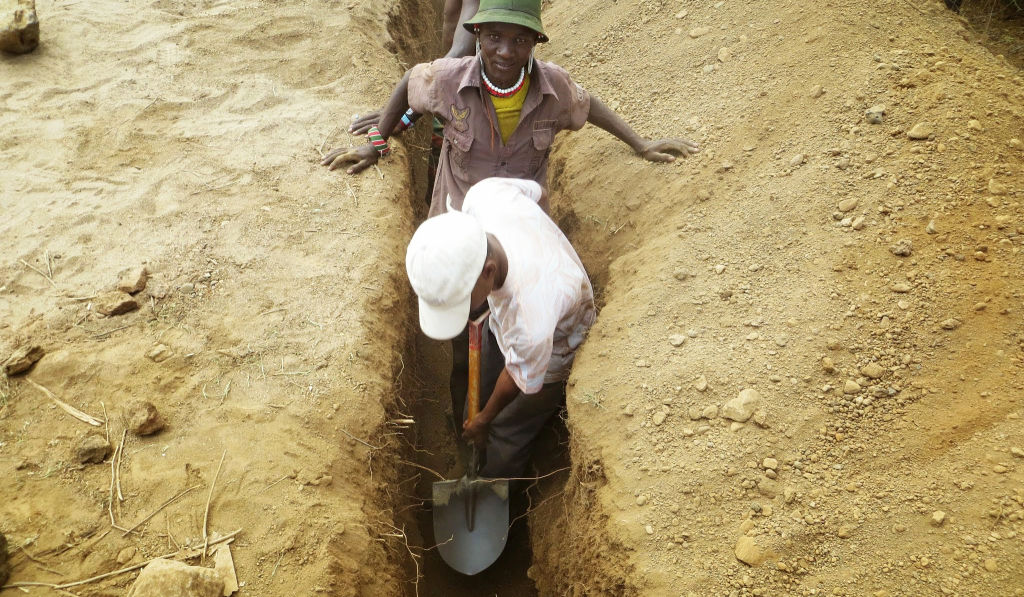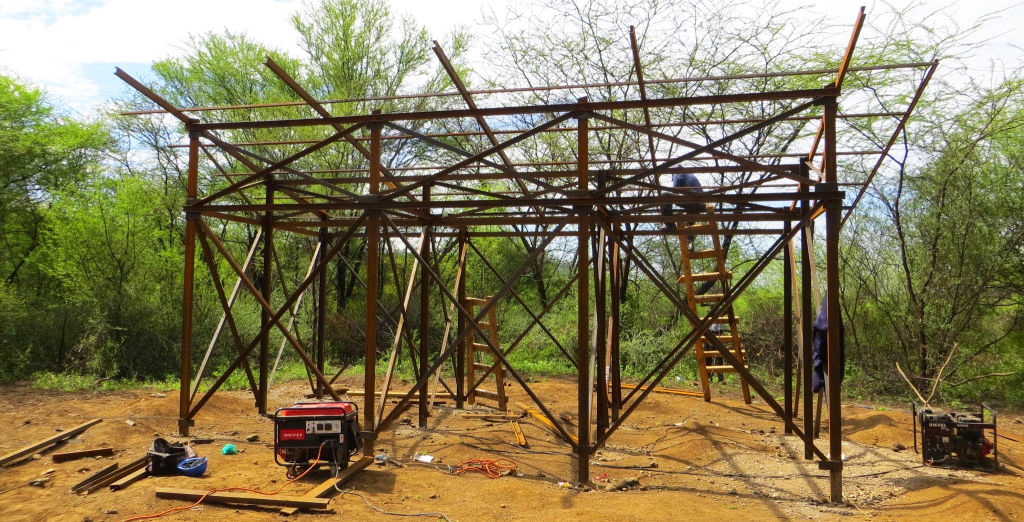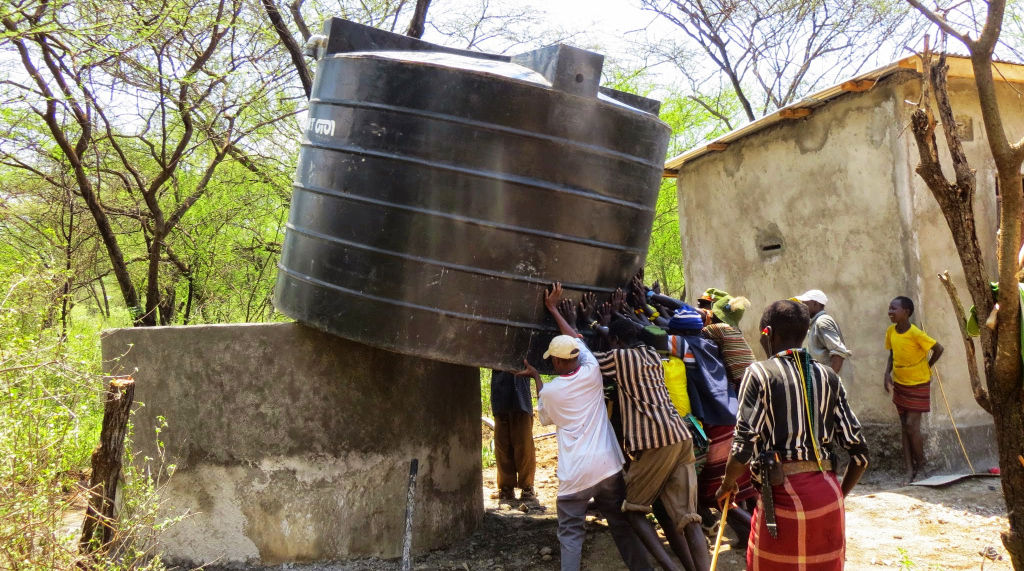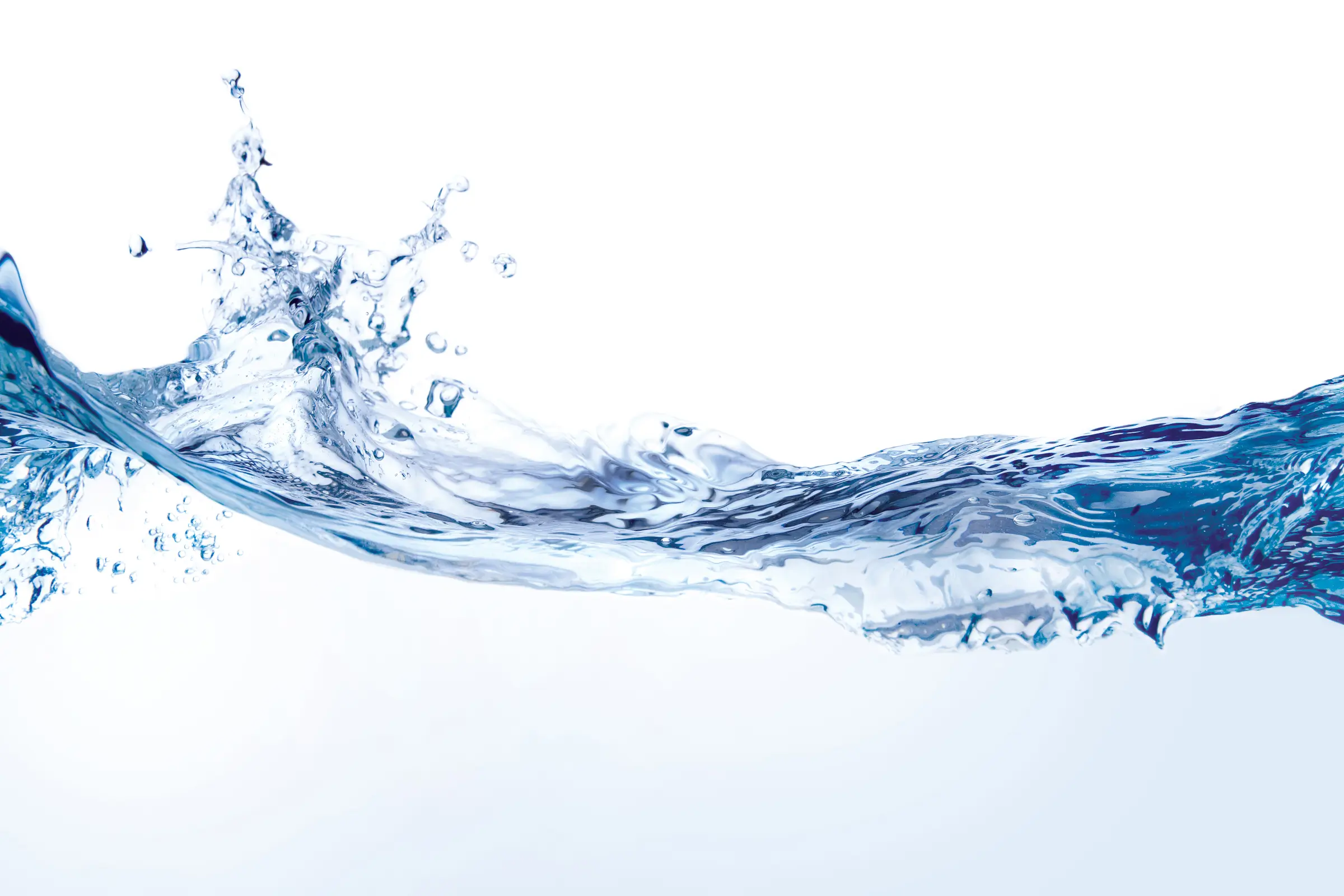The Mount Paka Project Challenged Our Engineers
 You've read the story of the isolated community of Mount Paka, Kenya, and the Pokot tribe that received safe water this September through Water Missions International, but what you may not know are the difficulties that arose in the two-and-a-half year design and implementation process.
The nearest water source for the Pokot people was a dangerous three kilometer walk away. It took the women eight hours every day to fetch water. Water that was unsafe to drink. We sought to bring safe water to their community, near their village, eliminating dangerous walks and waterborne diseases.
The first attempt to provide safe water started with drilling a borehole, which turned out dry. We then reached out to a leading American geophysicist to help us identify the best location for drilling a second well. The second borehole finally reached water at 650 feet below the earth, but due to geothermal activity in the area, the water temperature was 100°F.
Because of the depth and high temperature of the water, the typical pumping systems utilized by our engineers would not work. We turned to one of our partners, Grundfos, for a solution. As a leader in pumping technology, Grundfos developed a custom pumping system that could run off of solar power and be able to handle the increased water temperature.
Once we identified a solution, we realized it was just the beginning of the undertaking to see safe water flowing at Mount Paka. Shipping and logistics proved to be a challenge as a pump built in Denmark needed to travel to one of the most remote regions of the world. Our logistics team arranged an air shipment to Kenya and our amazing Kenya staff helped to get the installation rig out to Mount Paka through flooded streams and muddy trails that barely qualified as roads.
You've read the story of the isolated community of Mount Paka, Kenya, and the Pokot tribe that received safe water this September through Water Missions International, but what you may not know are the difficulties that arose in the two-and-a-half year design and implementation process.
The nearest water source for the Pokot people was a dangerous three kilometer walk away. It took the women eight hours every day to fetch water. Water that was unsafe to drink. We sought to bring safe water to their community, near their village, eliminating dangerous walks and waterborne diseases.
The first attempt to provide safe water started with drilling a borehole, which turned out dry. We then reached out to a leading American geophysicist to help us identify the best location for drilling a second well. The second borehole finally reached water at 650 feet below the earth, but due to geothermal activity in the area, the water temperature was 100°F.
Because of the depth and high temperature of the water, the typical pumping systems utilized by our engineers would not work. We turned to one of our partners, Grundfos, for a solution. As a leader in pumping technology, Grundfos developed a custom pumping system that could run off of solar power and be able to handle the increased water temperature.
Once we identified a solution, we realized it was just the beginning of the undertaking to see safe water flowing at Mount Paka. Shipping and logistics proved to be a challenge as a pump built in Denmark needed to travel to one of the most remote regions of the world. Our logistics team arranged an air shipment to Kenya and our amazing Kenya staff helped to get the installation rig out to Mount Paka through flooded streams and muddy trails that barely qualified as roads.
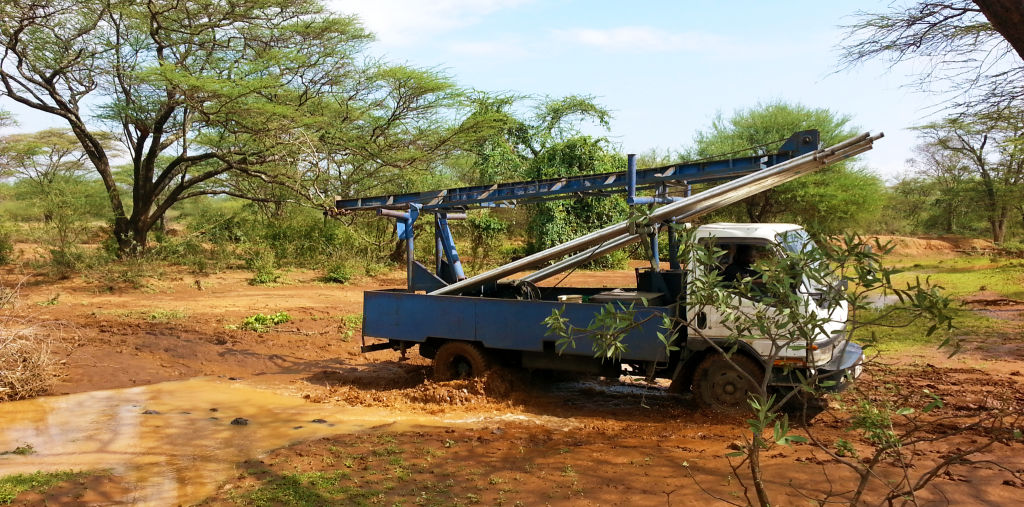 Heavy equipment on muddy roads meant added obstacles in transportation, like stuck trucks.
Since we planned to install the largest solar pumping system completed to date, new drawings and technical knowledge had to be developed. One of the new designs was a large solar racking frame to hold the 8.6 kW of solar panels. The design had to factor in the type of metal framing available in Kenya and the skill level of the local welders to successfully complete the structure. I joined in the project to train Water Missions Kenya staff on installing and programming the inverter, which took the DC solar power and converted it to AC pump power.
In addition to the technical, the human element has to be factored in to every project. How will the local community be engaged in our work? Will the goats and cattle, which are so vital to the Pokot people's livelihood, be able to get water with ease, without damaging any of the equipment? What conflicts exist within the community that need to be addressed along the way? During the construction and installation, our engineers spent almost as much time engaging with the Pokot people as we did wiring solar panels and managing the construction progress.
Heavy equipment on muddy roads meant added obstacles in transportation, like stuck trucks.
Since we planned to install the largest solar pumping system completed to date, new drawings and technical knowledge had to be developed. One of the new designs was a large solar racking frame to hold the 8.6 kW of solar panels. The design had to factor in the type of metal framing available in Kenya and the skill level of the local welders to successfully complete the structure. I joined in the project to train Water Missions Kenya staff on installing and programming the inverter, which took the DC solar power and converted it to AC pump power.
In addition to the technical, the human element has to be factored in to every project. How will the local community be engaged in our work? Will the goats and cattle, which are so vital to the Pokot people's livelihood, be able to get water with ease, without damaging any of the equipment? What conflicts exist within the community that need to be addressed along the way? During the construction and installation, our engineers spent almost as much time engaging with the Pokot people as we did wiring solar panels and managing the construction progress.


The project used the most solar panels ever installed on a single WMI project, a custom designed pump, and world-class technical knowledge - all for one of the most remote regions in Kenya.
We believe Jesus calls us to go the extra mile to meet the needs of others. Water Missions also believes it has the ability to be a solution provider to any community around the world that lacks access to safe water. At Mount Paka both of these beliefs were tested. Thanks to a supreme God, the perseverance of our staff, and the dedication on the part of our donors, we were able to fulfill this belief.
The people of Mount Paka will have a brighter future because of it.
 Written by Chris Bryan, a project engineer who spent time in Mt Paka, Kenya, assessing, rethinking, and leading engineering efforts.
Photography contributed by Chris Bryan, Andre Mergenthaler, and Water Missions Kenya staff.
Written by Chris Bryan, a project engineer who spent time in Mt Paka, Kenya, assessing, rethinking, and leading engineering efforts.
Photography contributed by Chris Bryan, Andre Mergenthaler, and Water Missions Kenya staff.
Related Impact Stories
